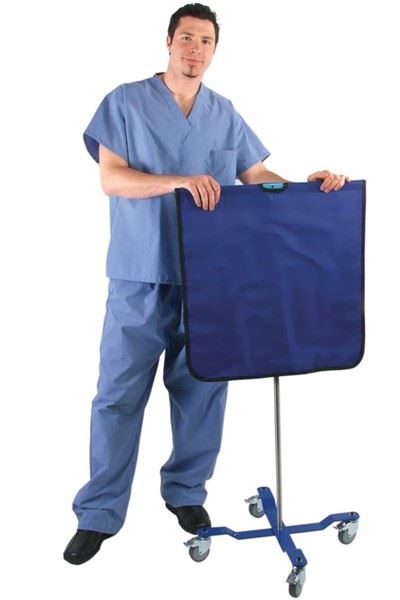-
Home
-
Understanding Lead Thickness for Radiation Protection in Medical Settings
Understanding Lead Thickness for Radiation Protection in Medical Settings
August 22, 2023
 Exposure to scatter radiation can have severe health impacts. In healthcare settings, doctors, nurses, and surgeons are often at risk of this type of exposure, which makes radiation protection essential. One of the most effective ways to accomplish this is through lead or lead-equivalent shielding. However, the effectiveness of lead shielding largely depends on the thickness of the lead used. In this article, we will explore the importance of lead thickness for radiation protection and the implications it has in healthcare settings.
Exposure to scatter radiation can have severe health impacts. In healthcare settings, doctors, nurses, and surgeons are often at risk of this type of exposure, which makes radiation protection essential. One of the most effective ways to accomplish this is through lead or lead-equivalent shielding. However, the effectiveness of lead shielding largely depends on the thickness of the lead used. In this article, we will explore the importance of lead thickness for radiation protection and the implications it has in healthcare settings.
What is Lead Shielding?
Lead shielding is the process of reducing radiation exposure by using lead or a material with lead-equivalent protection as a protective barrier. However, the thickness of the lead plays a crucial role in determining the level of protection it offers. The minimum thickness of lead required for radiation protection varies depending on the type of radiation, the radiation dose, and the distance from the source. In general, the greater the radiation energy, the thicker the lead needs to be.
The thickness of lead for personal protective devices depends on various factors like the size of the barrier, the amount of radiation it is exposed to, and the radiation emitted by the equipment that it is protecting. The standards for lead thickness for radiation protection are regulated by the International Commission on Radiological Protection (ICRP), which recommends a minimum thickness of 0.25 mm of lead for aprons used in radiological procedures.
Lead Thickness for Radiation Protection Aprons
Surgeons, radiologists, and other healthcare professionals who work in close contact with radiation sources must wear lead aprons or aprons with lead-equivalent protection against radiation exposure. The thickness of these aprons depends on the level and type of radiation exposure they may face. For example, a 0.25-mm thick lead apron is adequate for low-dose x-rays such as dental x-rays. For higher doses of radiation, aprons with a thickness of 0.5- to 0.75-mm lead equivalence are necessary.
Lead Thickness for Thyroid Shields
Protecting the thyroid from radiation exposure is especially vital, as it can lead to a variety of serious health conditions. The lead or lead-equivalent thickness in thyroid shields directly affects their ability to absorb and block radiation effectively. Generally, these shields provide 0.5 mm lead-equivalent protection. Some shields are built into protective aprons, while others are detachable or sold individually.
Lead Thickness for Eyewear
Eyes are also especially sensitive to radiation, so it is important to wear protective eyewear or face shields during any potential exposure. Radiation protection glasses are made with leaded glass or lead-lined material which provide 0.75 mm of lead-equivalent protection. There are many different styles available, but the main types include side-shield, wraparound, and fitover glasses.
Lead Thickness for Barriers
In addition to radiation protection apparel, healthcare professionals should use shields and barriers where possible to limit radiation exposure. These devices are used to protect larger areas or parts of the body that are difficult to cover and are ideal for use during longer procedures or when more protection is needed. Shields and barriers should have a minimum of 0.5 mm Pb-equivalent protection but can offer up to 2.0 mm Pb-equivalent protection depending on the material used.
Calculating Lead Thickness for Radiation Protection
Calculating the thickness of lead required for radiation protection involves determining the radiation amount, energy level, duration of exposure, and area of the body. The thickness of the protective shield is then calculated based on the maximum permissible dose of radiation that an individual can receive over a given period. However, the formula for calculating the thickness of lead required is complex and requires specialized knowledge. Therefore, it is best to consult a professional in radiation protection to carry out the calculations.
Lead thickness for radiation protection is vital in healthcare, where radiation exposure is common. By adhering to radiation safety guidelines and using the right thickness of lead or lead equivalent for protection, healthcare professionals and patients can minimize the harmful effects of ionizing radiation.
Want to learn more? Visit the Radiation Protection Hub for additional resources and solutions to help protect both staff and patients from radiation exposure.